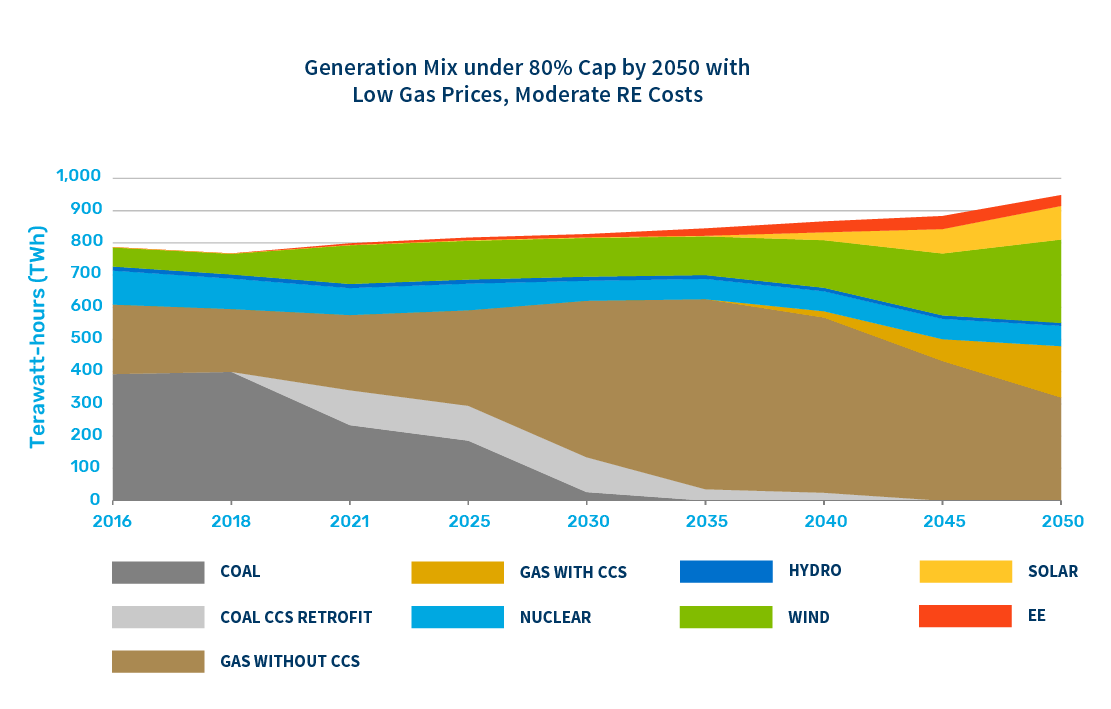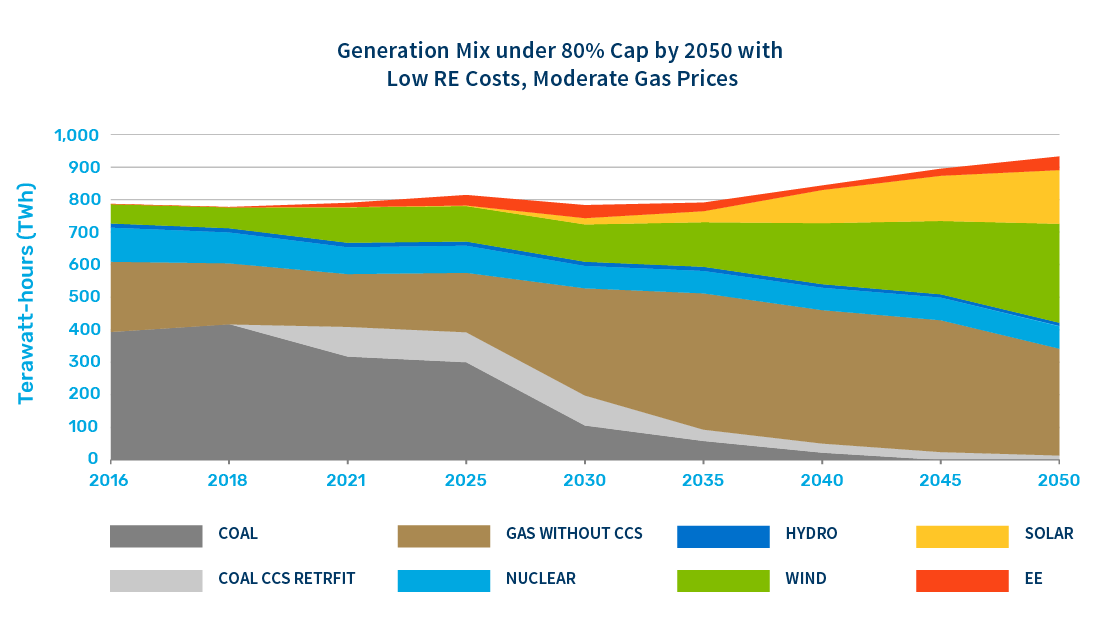Reaching 80 Percent Decarbonization
If one assumes that the region’s electricity system will need to reach a level of decarbonization that is 80 percent below 2005 levels by 2050, the analysis suggests that the optimal makeup of the system depends on natural gas prices and the cost of renewables, while preserving nuclear plants, shifting away from coal without carbon capture, and building out transmission to enable greater integration of renewables.
The reductions in the near-term time frame are very inexpensive—between $0 and $3 per ton of CO2 through 2030 because the cap trajectory is modest relative to “business as usual.” Modeled carbon prices (in real terms) are between $6 and $12 in 2035, $10 and $48 in the 2040s, and reach $68 to $95 in 2050.
The charts below show the generation mix out to 2050 under the 80 percent scenarios. In the first chart, we see the generation mix when the 80 percent carbon constraint is applied to our gas-dominated future where gas prices are low and renewables costs are moderate. In the second chart below, the 80 percent carbon constraint is applied to the more mixed future trajectory in which gas prices are moderate and renewables costs are lower.



The Role of Natural Gas
Reliance on gas without carbon capture lessens when a carbon constraint is applied. Natural gas out-competes other fuels when gas prices are low. When gas prices are more moderate, natural gas is less dominant. After 2040, utilization of natural gas generating capacity plunges, raising questions about stranded generation assets and also increasing costs of further emissions reductions when existing gas without capture can no longer be used. Gas with carbon capture and storage becomes a significant part of the mix in the latter part of the modeled time horizon, especially when gas prices are lower.
The Role Carbon Capture and Storage Plays
In the near-term, between ten and 14 gigawatts (GW) of existing coal capacity is retrofitted with carbon capture to take advantage of federal tax credits for CO2 storage, making up between 9 and 13 percent of the total generation mix in 2030. Natural gas with carbon capture becomes a significant part of the mix by the 2040s in the scenarios where gas prices are lower.
Below you can access more modeling analysis through an interactive feature provided by the Midcontinent Power Sector Collaborative’s FACETS modeler.

The Role Renewables Play
Wind, solar, and energy efficiency increase in a carbon-constrained future. Not surprisingly, renewables are a bigger part of the mix when renewable costs are low and gas prices are moderate. Wind capacity more than doubles in an 80 percent decarbonization scenario compared to the ‘business as usual’ model. Wind and solar combined make up between 38 and 57 percent of the generation mix in 2050.


